But Indispensable
Guide to Hair Loss
Solutions
L.H. Carson
(Eads Publishing,
Pasadena, California)
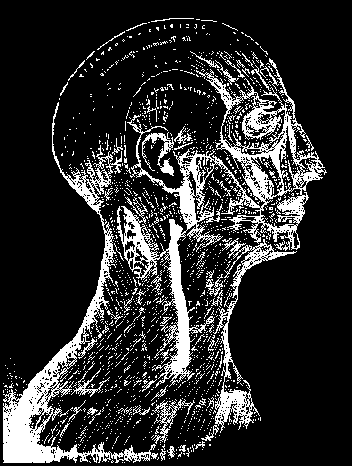 I've been a rug spotter for years. No, not a piddle-on-the-carpet spotter, but a relentless observer of TV hairstyles and non-partisan exposer of those I deem "assisted." So you can see why this book is a treasure to me. Never mind that some of the 37 alternatives to balding include Peach Tree Leaf tea, shoe polish and a baseball cap. This is just fuzz.
I've been a rug spotter for years. No, not a piddle-on-the-carpet spotter, but a relentless observer of TV hairstyles and non-partisan exposer of those I deem "assisted." So you can see why this book is a treasure to me. Never mind that some of the 37 alternatives to balding include Peach Tree Leaf tea, shoe polish and a baseball cap. This is just fuzz. The descriptions of mainstream hair loss treatments are concise and thorough, awful and fascinating. I could describe things like scalp reduction, silicon bag implants, or flap relocations, but if you watched the Senate Impeachment Trial, you saw for yourself the results of these techniques and many of the 35 others described by the author.
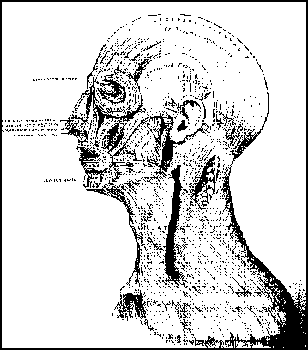 It's a mild enough vanity, but an interesting contrast to medieval Japan, where men shaved the front of their heads to emulate the age and wisdom of their elders. The hair-impaired who wish to fight the failing follicle should take a look at this one. The author's jokey approach is disarming of a subject that is, in it's nature, embarrassing --- for unless one were embarrassed by hair loss, why bother?
It's a mild enough vanity, but an interesting contrast to medieval Japan, where men shaved the front of their heads to emulate the age and wisdom of their elders. The hair-impaired who wish to fight the failing follicle should take a look at this one. The author's jokey approach is disarming of a subject that is, in it's nature, embarrassing --- for unless one were embarrassed by hair loss, why bother?
It isn't screamingly funny, but the humor brushes away some of the subject's innate ickyness, making it a lot easier to take for us amateurs in hair loss lit.
We Trust
The Untold Story of
Sam Walton and how
Wal-Mart is Devouring
America
Bob Ortega
(Times Business)
Walton did it by selling. The great American dream. Sell enough and you become rich. Destroy your competition, and you become super-rich. Keep your employees underpaid --- minimum wage-earners are the best. (High turnover of employees means that you don't have to raise wage and ante up benefits.) Get your merchandise made overseas, in places like Bangladesh, where boys and girls, some as young as nine years old, become your workforce.
Sam Walton died a couple of years ago of multiple myeloma, but his works live on, including several patent falsehoods:
- The poor --- if energetic enough, and optimistic enough, like Sam --- can rise to the top. However, Walton started out far from poor. His PR machine doesn't advertise the fact that his first investment came from a rich father-in-law, bringing in a loan of some $500,000 (in 1995 dollars).
- Then there is the myth that Wal-Mart returns dollars to the community. In truth, a store that grosses many millions annually sets up, with great fanfare, local scholarships of $1,000; the rest gets shipped off to Arkansas.
- How about the myth that Wal-Mart workers are all "family" --- and that the company rewards its workers with stock options. If it's family, it's a family with peculiar rules (intrafamilial love not permitted). Moreover, it's been shown that not more than one in fifty will ever be able to take advantage of stock options. The rest drop out sooner or later because they just can't stand working for such miserable wages.
- Then there's "what's good for Wal-Mart is good for all of us." This includes despoliation of land, encouragement of numbing conformity of the employees, and support of aggressive --- often vicious --- business practices, especially associated with the politics involved in setting up a new store.
- The most-repeated canard is Sam Supersalesman was a great and humble folk because he drove old cars and glad-handed his employees. This made him worthy of Presidential medals-of-honor. But you'll notice that he did not drive around in the $20,000,000,000 trusts he set up for his wife and each of his children --- thus avoiding almost all estate taxes.
- Finally, they tell us that he and his stores bring needed bucks into our communities. However, if you look at the figures, it turns out that our governments --- federal, state, local --- not only don't get much in taxes from the likes of Sam, they subsidize him, his estate, and his family estates through tax gimmicks.
Walton's original method of operation was to set up huge discount stores that, in opposition to K-Mart or Target or J C Penney or Sears --- were located solely in small towns. He started out in Bentonville, Arkansas, and spread throughout the United States --- and now, even as we speak, his ghost is spreading the disease to other parts of the world.
Like countless other entrepreneurs of the last half of the 20th Century, governmental institutions that helped him lavishly --- but their good works for Sam were well hidden. For example, he was --- Wal-Mart still is --- on the dole from federal, state, county and city governments. We ain't talking measly welfare checks, we're talking tax advantages, rebates, and multi-million dollar checks (what they call corporate welfare). On the federal level, there's the lowering of international tariff barriers so that his clothing can be manufactured by hand by teens and sub-teens earning ten-cents-an-hour in Honduras, Bangladesh, Indonesia, China. Then the U. S. Congress gives him artificially low minimum wage and medical benefit requirements so that the young and the ill-educated can be used as Wal-Mart's primary workforce. They tell us that this work keeps the kids off the street, makes productive citizens of them; we never look at the price extracted from their souls for working in such a sterile environment.
Finally, there are the immense rebates and reduced taxes (sometimes, reduced to nothing) provided by city and county councils, themselves mostly real estate people. It's the usual variation on control over property values: a simple change of zoning from "rural" to "business" can increase the value of property a thousand-fold. With a bevy of lawyers, and an artful PR machine, it's always been easy for Wal-Mart to get variances so that their huge boxes can be erected, surrounded by acres of parking spaces. This doubles the value of the land, while at the same time contravening all good architectural and aesthetic sense. Would you want to live next door to a Wal-Mart?
Then there are the other indirect subsidies. Local and county rebates are set up, written in arcane language, so that a town's citizens will never know that they are subsidizing Sam's stock portfolio. What is said, instead, is that the city is going to benefit from his merchandise, and from 800 new jobs. It's not much different from what happened in 1950 when they said that the thousands of new jobs created by the new nuclear facility in Hanford, Washington would be of great financial benefit to the community, offer great security for the citizens of Southern Washington. Typical. The local governments hot to get Wal-Mart in their area don't look at what sociologists know as the ruination of the natural infrastructure --- the links between merchants, townspeople, and the subtle health of a community. Only after it's done and in place do we see city center suddenly destroyed by this box from outer space, resting in asphalt, five miles north on the Interstate.
At the end of his life, Sam Walton was lionized --- but few took the trouble to point out his was a tyrannical business where employees could be fired for trying to organize unions to represent them, or even falling in love with a clerk in the next department. The myth was that it was pure American work-ethic, with a benign, homey straight-shooting character at the top.
In Sam We Trust is an excellent moral tale of a system that rewards the avaricious while it penalizes --- if not destroys --- the human scale and values of communities. The Christian fundamentalists think that the devil is at work in the form of abortions, television programs about gays, and crucifixes stuck into bottles of urine. Too bad they don't have the time to look out and see what's going on the edge of town.
In 1992, George Bush gave Sam Walton the Presidential Medal of Freedom, one of the country's highest civilian honors. The message: if you build a fortune on the corpses of the poor and under-represented, the government will give you its love and its blessings. Local businessmen with more humane operations and more humane scale get bull-dozed, the owners sent into premature and poverty-stricken retirement --- while those who steamroller our lives with opportunistic merchandising get the blessings of the presidents.
David Glass --- the man who took over after Sam's death --- was asked by NBC about children in Bangladesh who hand-sew clothes for Wal-Mart "locked in their plant until all hours of the night, until they finish that day's production." Glass was then shown photographs of one factory that burned down with the children still locked inside. He responded, "Yeah...there are tragic things that happen all over the world." The interview was terminated at this point, not by NBC, but by Wal-Mart's publicity person.
Bob Ortega wrote In Sam We Trust and writes for the Wall Street Journal. He's good. In simple language, he shows how you and I had the privilege of paying, through the nose, for Sam's preposterous wealth. He also suggests that we deserve better.
of Fortune:
Triumph and Scandal in the
Life of Oil Tycoon
Edward L. Doheny
Margaret Leslie Davis
(University of California)
-
Yesterday these golden rewards were heavy in his hands, today the magician Death has breathed on them and lo! they are there no longer. Thus Death laughs at the world, for he makes failures of us all. With the grim tax-gatherer there is no question of percentage. He takes all. Even of genius he leaves only a memory ... The nation, the state, the city owe Edward Laurence Doheny much; but let nation or state, or city, now try to pay one penny of the debt, even by a kind thought or a word of long-delayed justice, and it will not in the slightest degree matter to him.
St Vincent's Church, Los Angeles, 11 September 1935
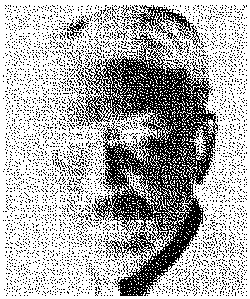 Edward Doheny was one of those scoundrels who prospered so richly at the beginning of this century in what they used to call Capitalist America. Early on, like Rockefeller, he saw that this black stuff oozing out of the ground could be turned into a fortune. With a small amount of capital, he bought mineral rights to the major "seeps" around Los Angeles, and by 1900, had made the first of his many millions. The usual tale of raping the land and ripping off partners and screwing the innocent citizens.
Edward Doheny was one of those scoundrels who prospered so richly at the beginning of this century in what they used to call Capitalist America. Early on, like Rockefeller, he saw that this black stuff oozing out of the ground could be turned into a fortune. With a small amount of capital, he bought mineral rights to the major "seeps" around Los Angeles, and by 1900, had made the first of his many millions. The usual tale of raping the land and ripping off partners and screwing the innocent citizens.Unfortunately for Mexico, Doheny had plans for international fortune: he heard of seeps on the eastern coast region of Tampico, near Tuxpan. In connivance with the Porfiro Díaz government, he stole thousands of acres from the indigenous people of that area, built extensive drilling, refining, and shipping facilities, and in the process, managed to tap into the fabulous Cerro Azul, the richest vein of oil ever discovered.
Doheny's goal wasn't confined to plumbing the depths of the land, he was eager to plumb the depths of human greed as well --- and along with the notorious Harry F. Sinclair, he attempted to steal, through bribes given to Harding's cabinet member Albert Fall, the incredibly rich U S Navy holdings in Teapot Dome and Elk Hills. They were caught, a copy of the note given to Fall was produced at a notorious trial, but Doheny's money bought him freedom even though, the author claims, he ended up a broken man.
Margaret Davis has put together a workmanlike study of Doheny, Fall, and Sinclair, but she seems, at least to this reader, to bend over backwards to be charitable to a man who, after all, was a wretch and a scoundrel. We're given extensive --- all too extensive --- correspondence and love letters between Estelle Doheney and her husband (their honeymoon was spent in his personal rail car, but he spent the early years of their marriage tramping the wilds of Mexico to obtain rights.)
Davis' readings of the character of dictator Díaz (with whom all foreign businessmen had to deal) is kind, to say the least. This a man who for thirty-five years held an entire peasantry in near serfdom; but here, he's limned in what sounds like a cheerful biography from the 1900 Mexico City Chamber of Commerce:
- Díaz was fully aware of the latent value of his country's oil resources, but his government lacked the funds and expertise to fully exploit the underground treasure. He realized foreign developers like Doheny and Canfield were needed to launch this promising industry and, in so doing, bring a much-needed boost to the economy. After meeting with Doheny and Canfield, Díaz offered them generous tax breaks as additional encouragement. He told Doheny that he hoped Doheny's visiting American laborers would teach his people "how to write, how to live, and how to progress."
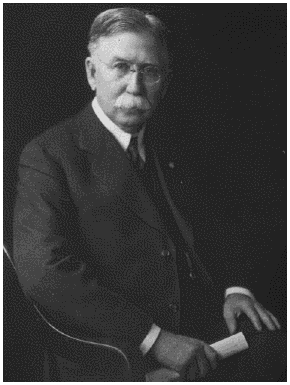 Once the revolution broke out, Doheny and the other captains of American Industry who owned most of Mexico wrote a letter to Woodrow Wilson asking that he back Victoriano Huerta as President. Those who know their Mexican history could easily gauge Doheny's morals from this one: Huerta made his name as a conscienceless murderer of those who were trying to help the revolution, and the poor.
Once the revolution broke out, Doheny and the other captains of American Industry who owned most of Mexico wrote a letter to Woodrow Wilson asking that he back Victoriano Huerta as President. Those who know their Mexican history could easily gauge Doheny's morals from this one: Huerta made his name as a conscienceless murderer of those who were trying to help the revolution, and the poor.
Doheny most famous line, at his trial, when presented with a copy of a note signed by Fall, was that --- because he was so rich --- $100,000 was rather like $25 or $50 for regular home folk. In other words, he bought his friends. The way he showered money and presents on his friends and attorneys after the trial (he gave his attorney Frank Hogan a brand new car, tied with a ribbon) belies Davis' attempt to prove that he ended his life "a broken man."
A Good
Christian Be
A Good Lawyer
Homilies, Witnesses, and Reflections
Thomas E. Baker and
Timothy W. Floyd, Editors
(Notre Dame)
What's a good Christian anyway? First thing that comes to mind is turning the other cheek. A good lawyer can't do that! Clients don't want their lawyer going in there and turning the other cheek.
I'm an old public defender; I tell you: the main thing all of my clients want, first and foremost, is outta jail, and they don't care what their hair-splitter does to get them out.
I couldn't help looking through this collection of "homilies, witnesses, and reflections" to see if there's anything helpful in there for a committed young public defender who wants to hold down the human misery of years in overcrowded prisons for his indigent clients. Well there isn't. Not one of these mealy-mouth essays deals with the blood and guts ethical stuff criminal defense lawyers deal with all the time. (How can you defend these assholes? is the question all of us in the defense bar have heard for a lifetime.)
But let's leave that one aside because I want to tell you that when I was young and in the trenches I didn't get my strength from reading Bible verses. I read The Bhagavad Gita. At the beginning of the Gita the warrior Arjuna is on the battlefield, between the two armies, waffling about whether he oughta be indulging in the "killing of kinsmen." Well Krishna doesn't tell him to turn the other cheek; he tells him to get out there with his sacred bow and arrows and kick some ass! "Do your duty and quit that whining. The way to God for the man of action is karma yoga."
- To unite the heart with Brahman and then to act, that is the secret of karma yoga. In the calm of self-surrender, the seers renounce the fruits of their actions and so reach enlightenment. Then they are free from the bondage of rebirth, and pass to that state that is beyond all evil.
So a Hindu who reads the Gita can be a good lawyer, no problem. And everybody knows Jews make good lawyers. But a "good" Christian? I don't know. I know from personal experience that they don't make good truck mechanics, but that's another whole story.
Those overeager "house managers" prosecuting Clinton invoke the name of the Almighty all the time, including the adulterers, including leader-of-the-pack Henry "Youthful Indiscretion" Hyde. I think they're pretty crummy Christians, really, but they're not bad lawyers. As an old muni court veteran, I listen to their raps in the Senate and I think, some of these pitches are pretty good. And of course every one of them is a former prosecutor, it's written all over them.
Like the guys I crossed swords with over in the DA's office --- some of the most successful were also the biggest assholes, no doubt about it. Self-righteous, just like those house managers, flaunting their moral superiority. I know a lot of them thought of themselves as good Christians. You know, doing the Lord's work by putting away the scumbags. I guess it all depends on your point of view.
Folks over at the University of Notre Dame --- who had this anthology published to a waiting world --- decided to include a three-page "homily" by Ken Starr, of all people. Yeah, that Ken Starr. Starr's moralizing discourse (Christian Life in the Law) had double dog-ears on it when we got this book from our esteemed editor. Just so I wouldn't miss it, he underlined the part where Starr says he repeats Bible verses quietly to himself before every court appearance. He says he does it for the same reason Orel Hershiser sings hymns to himself out there on the pitcher's mound. Before standing up in a courtroom, he always says to himself, silently, several times, I can do all things through Christ who strengthens me.
And I say to him, take it outside, god-boy! I mean really: this is the guy who had Monica's mother on the carpet in front of a "secret" grand jury for three days to spill her recollection of personal, mother-daughter conversations about sex. Did he ask for Christ's outside assistance before he did that? And abusing the process to the max, spending 50 million of public money, harassing minor witnesses into bankruptcy and jail. A guy whose name is going to go down in history as a synonym for invasion of privacy. A geek with absolutely no prosecutorial experience, never even tried a drunk driving case, no clue what it actually takes to win a case in court. And he didn't win. Christ apparently didn't bother to join in with Ken when he put his shoulder to the wheel on this one.
But then maybe Ken was strengthened by Christ when he kicked ass for those tobacco companies. I mean he did win for Big Tobacco, and he's not a very good lawyer; we've all seen that Maybe Christ did give him some help on that one. See that's the trouble with claiming God's on Our Side. As Bobby Dylan pointed out, even Hitler thought he had God on His Side. This kinda crap can justify anything.
Astral Projection
For Beginners
Edain McCoy
(Llewellyn)

This hypnogogic state began to come to me more often when I was having my first in a series of nervous breakdowns beginning at age forty or so. Breakdowns --- or as one psychotherapist insisted on calling them "breakthroughs" --- would be those times when I couldn't eat nor concentrate, a time when my whole life turned to cardboard.
During those months, when I could read, I did a fair amount of research on matters mystic, and I stumbled across something that sounded very much like my frozen, just-awakened state. The word was "hypnogogic" (we always crave words for our madnesses; I found one) and it was stated that it was a perfect springboard for astral projection. I'd read Robert Monroe's ground-breaking book on the same subject a few months before, so the next time I woke in what I used to call the frozen state I went right to getting my body out of my body.
It was appallingly easy --- like squeezing a boiled onion and having it squirt right out of your hand and onto the floor. I spun around, using my spine as a fulcrum, and went directly off into hyperspace. (Isn't that the way it goes? When we finally stop fighting something, that something may well turn into something precious.)
Almost every night for a few months there, I left my body behind, flew out to the edge of the universe. Unlike most people who are terrified at this state of affairs I delighted in it --- so delighted that as soon as I got up to Mach-5, I'd get overly-excited and immediately wake up. Over the years, I took many journeys, and always hungered for more. However, I found, to my regret, that as my personal madness went into decline, so did my ability to fly without a specific license from the FAA.
Over the years, I've read several more books on the subject, but, outside of Monroe's classic Journeys Out of Body, most of them are a bit too rich in cant and jargon of the mystic "new age" school. McCoy's Astral Projection for Beginners is a pleasant exception. It's a primer for beginners, written in simple language. It starts with background on the "chakras" (energy centers) which she feels give one the necessary equipment to start flying --- although, as the text develops, it will be shown that this is not the only method of leaving the body. In Part II, she gives us Six Methods of Astral Projection, including the use of meditation, "symbolic gateways," and the utilizing of dreams. Finally, she encourages further experimentation, including "Remote Healing" and "Creative Visualization."
In every way, her language is none but the most simple and direct --- and her asides are always helpful. For instance, she warns us that if we plan to use astral projection for the purpose of spying on others, we might find that there are consequences that could be harmful to us. She always encourages us to "ground" ourselves, drawing energy either from the sky or from the ground below. She cautions us to disassemble and bury whatever we have put together for each trip so others won't have to stumble over us or it in their own journeys. She encourages us to seek out "spirit guides" --- those beings on the other side who can help us to travel through time and space.
It is advisable to facilitate a meeting with your principal guide early in your astral projection experiments. To do this, you will simply go into as deep an altered state of consciousness as possible, and mentally call out to him or her to meet you just after you are successfully projected. A being should appear to you almost immediately in a form that is pleasing. The being may even be vaguely familiar to you; it should assist you in making your leap onto the astral plane.
She goes on to point out that in the "altered state," all seems quite "surreal," and we may poo-poo what we see and feel and hear. She says, "It's easy at first to discount the guide who appears to you as being no more than a product of your imagination." Then she says, with notable understatement (one of her asides that I find so endearing):
One of the best ways to tell real from unreal --- if there is such a distinction --- is to gauge your emotional state.
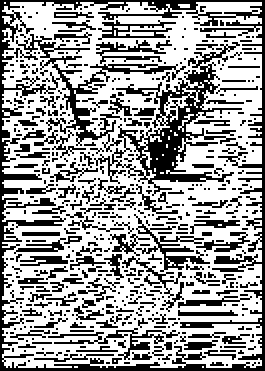 She points out that this first meeting with out guide may well be overwhelming because it will consist of "unconditional love."
She points out that this first meeting with out guide may well be overwhelming because it will consist of "unconditional love."At all times, McCoy addresses the potential fears of her readers, fears which many of us will have when we move into this world so separated from what we like to call reality. We may have fear that we will be dragged unwillingly into dangerous places, or a fear that we will have contact with those who wish us harm, or a fear that we will get "out there" and not be able to return. In all cases, she offers not only reassurance, but specific tools that we can use to protect ourselves when we are in such a vulnerable state.
For example, if we find a guide who "is not in a pleasing form or if he or she makes you feel uncomfortable," she says that we may be "in the presence of a lower astral entity who is playing games." She then offers specific tests to determine if this is truly our principal guide.
In all cases, she calls for clearly expressed thoughts and visualizations when communicating, or when creating what she calls the "Body of Light." "Don't be tempted to use flowery language --- it can be misinterpreted..." she tells us.
Astral Projection for Beginners emphasizes that honesty, good will, good spirit, and absence of greedy or self-aggrandizing motives will be rewarded. She also has very specific and helpful pointers on accouterments that we might use when beginning out attempts to fly. When attempting transfer into the Body of Light, it might help, she tells us, to use incense.
- Incenses that are known to assist in general altered state work will be of use here as well. Among these are wormwood, sandalwood, jasmine, or poplar bark. A mild tea of mugwort, catnip, or valerian can also be useful, but be aware that none of these taste very good. The catnip and valerian can also be strongly sedating, and the latter smells horrible if not infused with a little peppermint.
My friends, at least most of them, are what we --- or rather, they --- would call realists. This book would probably not interest them. They would call it "New Agey," mock it with some gentle neo-Cartesian put-down. More's the pity. It's a fine book on a fascinating subject --- written by one who has been there, and wants to help the rest of us get there too.